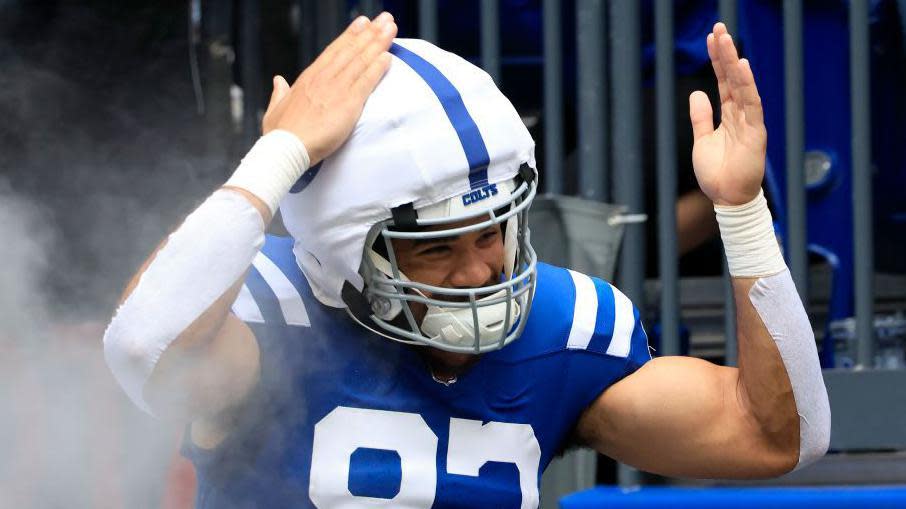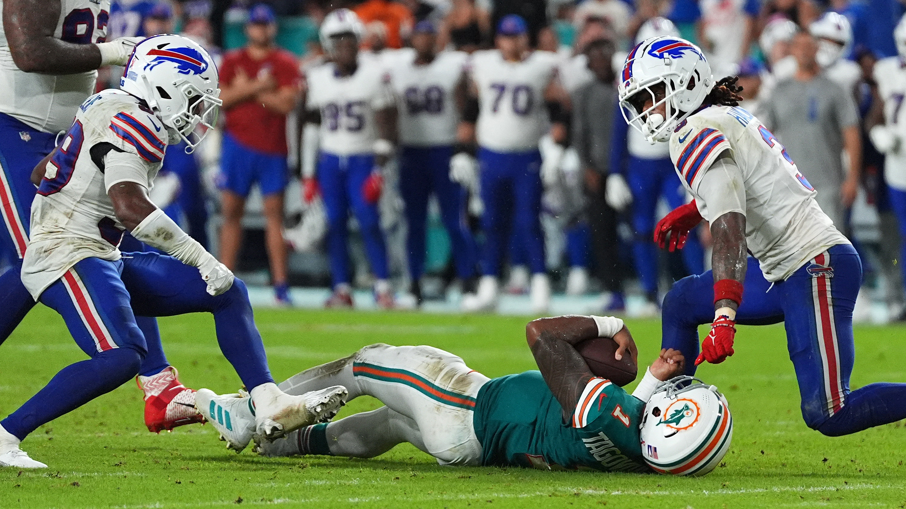Sports
What questions does NFL face after latest concussion?

Concussion in the NFL is back in the spotlight after Miami Dolphins quarterback Tua Tagovailoa suffered another head injury on Thursday.
After two concussions in 2022, he stayed fit last season and led Miami into the play-offs to earn a new long-term contract.
But the 26-year-old from Hawaii suffered another concussion last week – his third in less than two years and fourth overall, including his college career.
Many pundits and ex-players are now calling for him to retire – and some have even said the NFL should take the decision out of his hands.
So what questions must the league answer as it faces losing one of its franchise quarterbacks at the peak of his powers?
Should Tagovailoa retire?
Tagovailoa will now be assessed under the NFL’s return-to-participation protocol, a five-step process players must clear before returning to action.
They are assessed by a team physician and an independent neurological consultant (INC), who will also consider the player’s past exposures and medical history.
Dolphins coach Mike McDaniel said the timeline for Tagovailoa’s potential return is “the furthest thing from my mind” as he is “caring about the human being”. But once the player is passed fit, it will then be his decision whether to put himself back in harm’s way.
Tagovailoa admitted contemplating retirement after the two concussions in 2022. At that point, he was still on a rookie contract worth $30m (£22.9m). However, he has since signed a four-year deal worth $212m (£161m).
Fellow quarterback Andrew Luck is the most high-profile example of a player who retired early for the sake of his health – aged 29 in 2019.
Over the last 10 years, Jordan Reed (30), Luke Kuechly (28), AJ Tarpley (23), Ali Marpet (28) and Chris Borland (24) have also stopped playing because of multiple concussions or concerns over the long-term impact of head traumas.
Tagovailoa, though, has a far more lucrative contract at stake.
How many concussions are too many?
The NFL addressed that question directly in 2015, with a neuropsychologist saying simply “we don’t know”, as there is no definitive data.
The general perception is that three concussions can have a lasting impact. That could well stem from a 1952 study that suggested players “should not be exposed to further body-contact trauma” after three concussions.
A 2023 study, led by teams at the University of Oxford and University of Exeter, supported that advice as it revealed people who had three or more concussions “had significantly worse cognitive function”.
The neuropsychologist writing for the NFL in 2015 cautioned against using a ‘three-concussion policy’ – or any specific limit – as it would discourage athletes from reporting symptoms.
That is why independent personnel are now part of the protocol and they can trigger it whenever they suspect a concussion.
But does the NFL now need to revisit the question it was unable to answer in 2015?
Is the NFL doing enough to prevent concussions?


In December 2009, the NFL acknowledged for the first time that concussions can have long-term consequences.
After reaching a settlement worth $1bn (£665m) in 2015 to compensate former players, the NFL pledged to spend $100m (£75m) on medical and engineering research in 2016.
That has included several innovation challenges, where grant funding has been awarded to companies and institutions for research into technology which improves player safety, including Cardiff University.
The inaugural winners in 2017 were Guardian Innovations, who have developed Guardian Caps – padded, soft shell covers which fit over a player’s helmet and are proven to reduce the impact of head collisions.
After being mandated for use in pre-season practice two years ago, the caps are now allowed to be worn in regular season games for the first time.
Position-specific helmets have also been developed, as head impacts are different for players in different positions, and the NFL has regularly tweaked the game’s rules.
This season the kick-off rules have been changed again to reduce the risk of high-speed collisions on kick returns after data showed a disproportionate number of concussions on those plays.
What helmet was Tagovailoa wearing?


Since 2022, the number of concussions among players wearing the caps has fallen by nearly 50%.
However, from 2020, the total across each season has increased each year. The latest data shows there were 219 cases last season after 213 in 2022.
Speaking to BBC Sport last year, the NFL’s chief medical officer Dr Allen Sills attributed the increase partly to broadening the concussion protocol and more assessments being carried out.
To help combat the continued rise, the NFL tests helmets each year and publishes the results in a ranking poster.
Twelve new models are available this season – five of which are the best rated ever – while six older models are now prohibited. There is also more position-specific helmets available than ever before, with eight being introduced.
And despite the benefit brought by the caps, the NFL has said six helmets provide “as much – if not more – protection than a different helmet model paired with a Guardian Cap”.
Tagovailoa switched to a quarterback-specific helmet when they became available last year. He was not wearing a cap on Thursday and it is not known which helmet he was wearing.
But if it was one of those six models, and he was still concussed, the NFL must ask what more it can do to prevent one of its most exciting talents having to retire in his prime.







